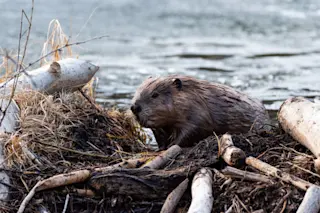Many animals are experts at building structures — whether it’s to live in, a place to breed or for protection. Chimpanzees rebuild their nests each night until they are just right within the branches of a tree. Tiny animals called coral polyps are responsible for building coral reefs. And honey bees have hexagonal honeycombs within their hives to store honey and their brood. Of all the builders in the animal kingdom, here are five examples of animal architects.
(Credit:Mountains Hunter/Shutterstock)
Ant colonies are impressive works of engineering, housing thousands of ants. Each consists of a queen, female worker ants and male ants. The queen’s purpose is to lay eggs, while the workers feed the larvae, tend to waste disposal and forage. The males mate with the queen. These underground cities include chambers with a connecting network of tunnels and typically only take a week to complete. Different chambers have specific ...















